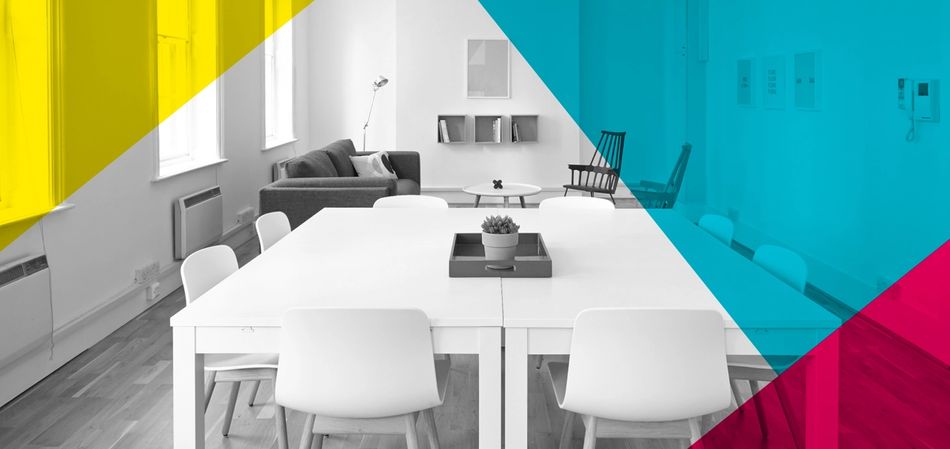
Working with new people is always full of surprises. About a year ago, I learned that my co-founders have a very particular way of starting meetings: they like to take turns and share how each person is doing personally before the meeting begins. At first I thought these “opening and closing rounds” might be a waste of time. But after a few months, I realized that they're are an effective way to get the most out of a meeting.
The first few opening and closing rounds we did were easy. We shared what we did on the weekend or a funny story from outside of work. It was simple chit-chat, and took only 3–5 minutes. But over time, as we got more comfortable, the opening and closing rounds became a time to share important parts of our lives with each other. I learned about my co-founder Dan struggling to get enough sleep when his daughter would wake up in the middle of the night. I learned about my other co-founder Jen’s struggle when her recovery from a bike accident was slower than she had hoped. And when my father passed away this year, this activity gave me an opportunity to talk about it with my team.
Taking time to share stories about life outside of work may not sound productive, but it’s actually the key to building highly productive teams. The complex work we all do requires tremendous cooperation to solve tough problems. So the limiting factor to performance isn’t how hard an individual can work, or how smart they are, but how well a whole team works together. The more honest we are with each other, the better we work together. And that’s why opening and closing rounds are one of the best ways to get higher output from your team.
Build a stronger team
Think back to the last time someone in the office annoyed you. Maybe you thought they were a jerk for not responding to that email, or for practically falling asleep in a meeting, or for being strangely giddy when everyone else was stressed.
The people in your office probably aren’t jerks. But it can be easy to jump to that conclusion because we so often see coworkers through the very limited lens of work. Maybe that person who snapped at you just got in a traffic accident this morning. Maybe that person who is annoyingly giddy just got back from a great weekend away. But if no one ever shares how they’re doing, you would never know.
As simple as it seems, spending 5 minutes getting to know your coworkers before each meeting pays huge dividends — it can encourage empathy and understanding that helps improve the cohesiveness of your team.
More effective and inclusive meetings
Opening rounds also help to create more inclusive meetings. It turns out that when everyone starts a meeting by speaking up once, it makes it easier to speak up later during the same meeting. So if you’ve been trying to encourage a teammate to participate more, a simple opening round might be just the ticket to help them be more comfortable speaking in front of their peers. In academic literature this chit-chat is called “Pre-meeting Talk”. Here’s the great part: even if you’re discussing funny gopher videos from YouTube, spending a few minutes to connect before a meeting is correlated with higher ratings of meeting effectiveness!
Sometimes I visualize this effect like a race-car going down a track. It’s tempting to floor the gas the whole race. But if you take every turn at top speed, you’ll end up in one ditch after another. A better approach is to slow down slightly, so you can safely navigate the unexpected turns.
Starting a meeting is no different. When we’re stressed, it’s tempting to jump straight into work topics. But if the conversation takes some challenging turns, people are more likely to misunderstand each other, and you’ll quickly end up in a conversational ditch. A opening round is a great way to get into gear, connect with each other, and then get down to business.
How to start a opening round in your next meeting
Like anything new, opening and closing rounds can feel a little uncomfortable at first. The trick is to begin your meeting with a simple ritual, and after a few months, you’ll hopefully have a practice where people feel safe enough to candidly share how they’re doing.
To introduce the idea, you could say something like, “I think it’d be helpful for us to start these meetings by getting to know each other a little better. I’d like to try an activity where we go around the room and each answer a simple question about ourselves. The only rules are to keep it brief and to hold discussion till the end.”
Once your team is comfortable with the concept, you can move into topics about life outside of work. And when the team becomes even more comfortable, you can introduce mindful reflection about how people are feeling in the moment. Eventually, you won’t need any questions at all.

Here’s some example prompts to get you started:
Step 1: Work related
- What part of your job do you like the most?
- What’s one thing you learned in the last week?
Step 2: Life outside of work
- How was your weekend?
- What’s your next vacation? Where will you go?
- What are you most excited about this week?
Step 3: Be in the moment
- What kind of day have you had so far today?
- What’s on your mind right now?
- What one word best describes how you’re feeling right now?
Step 4: Freeform
- How are you?
Way better than trust falls
I’ve been through plenty of team-building exercises in my day, but none of them have come close the connection that a simple opening round has helped create on our team. And in fact, you could do a simple 5-minute opening and closing round for each meeting, and still be spending less time than a single half-day offsite!
Opening and closing rounds help build relationships with teammates, which improves communication and helps everyone work better together. They make meetings more inclusive, which leads to more perspectives being voiced, which helps teams solve problems faster. And most importantly, it helps you see your teammates as whole human beings. With this perspective, work can be more compassionate and a hell of a lot more fun!
And check out our Guide to Standup Meetings to learn more about the ins and outs of standups, and how to get them right for your team.








